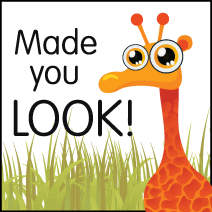
Dr. Laughlin’s children demonstrate safe eclipse viewing with glasses by American Paper Optics.
From: Grabill Eye Center
An exciting astronomical occurrence is coming our way Monday, August 21st. During the solar eclipse, the moon will pass directly between the earth and sun casting a shadow on the earth and temporarily blocking sunlight. While the greatest effect, a total eclipse, will be seen further south in western Kentucky and central Tennessee, NASA’s interactive map shows the sun will be around 85% obscured here in our area. This partial eclipse still creates a fun event for even amateur sky watchers and will start at about 1:00 pm local time and end at 3:47 p.m., with maximum eclipse in our area at 2:25 p.m.
Protecting your eyes while directly viewing this total eclipse is extremely important. Looking at the sun, even if it is less bright when blocked by the moon, can cause permanent retinal burns and scarring known as Solar Retinopathy. This damage is similar to welding, or flash burns, and because the damage to cells is generally in the macula, or central retina, the resulting blind spots in the center of one’s vision can be very debilitating. The retinal cells are a variant of nerve cells and once they are damaged, they cannot be repaired. Besides vision loss, lasting effects can also include distorted vision or altered color vision, and according to PreventBlindness.org, “It can take a few hours to a few days after viewing the total eclipse to realize the damage that has occurred.”
It is critical to know that sunglasses, even polarized or very dark sunglasses, still transmit way too much light and are not safe for eclipse viewing. Even quick glances without the right eye protection are not safe. Special purpose solar filters or “eclipse glasses” are necessary and are about a thousand times darker. These are so dark that only the sun or reflections of the sun should be visible through them. Beware of inexpensive fakes. According to NASA, “If your eclipse glasses or viewers are compliant with the ISO 12312-2 safety standard, you may look at the un-eclipsed or partially eclipsed Sun through them for as long as you wish. Furthermore, if the filters aren’t scratched, punctured, or torn, you may reuse them indefinitely.” They also note welder’s glass #14 or darker is safe for direct viewing. If you normally wear eyeglasses, keep them on and put your eclipse glasses on over them.
It’s an especially good idea to educate young children about not looking at the sun as they are less likely to understand the significance of the permanent visual damage, and buzz around the event creates lots of curiosity for watching. They should be supervised by an adult for direct viewing with protective eye-wear. Dr. Laughlin notes, “I personally remember watching the last partial solar eclipse that was visible in our area. It was May of 1994. We studied and made other safe indirect viewing contraptions at New Haven Middle School, including projection and pinhole methods.” Various tutorials on these techniques, which are inexpensive and safer for kids, are available online.
The last total eclipse in the U.S. was only visible in the Pacific Northwest in 1979. A coast-to-coast eclipse like this one in 2017 hasn’t occurred since 1918. While solar eclipses are fairly rare given that the moon’s shadow is only about 70 miles wide, save your viewing glasses, because the next total solar eclipse will be near 100% in our area on April 8, 2024.
Further safe viewing information and lists of reputable solar viewing glasses and filters can be found at eclipse2017.nasa.gov/safety, and if after viewing the solar eclipse, should you or your child have any changes in vision or eye pain that continues to get worse, contact Dr. Kara Laughlin or Dr. Brandon Callow at Grabill Eye Center by calling 260.627.1091.









